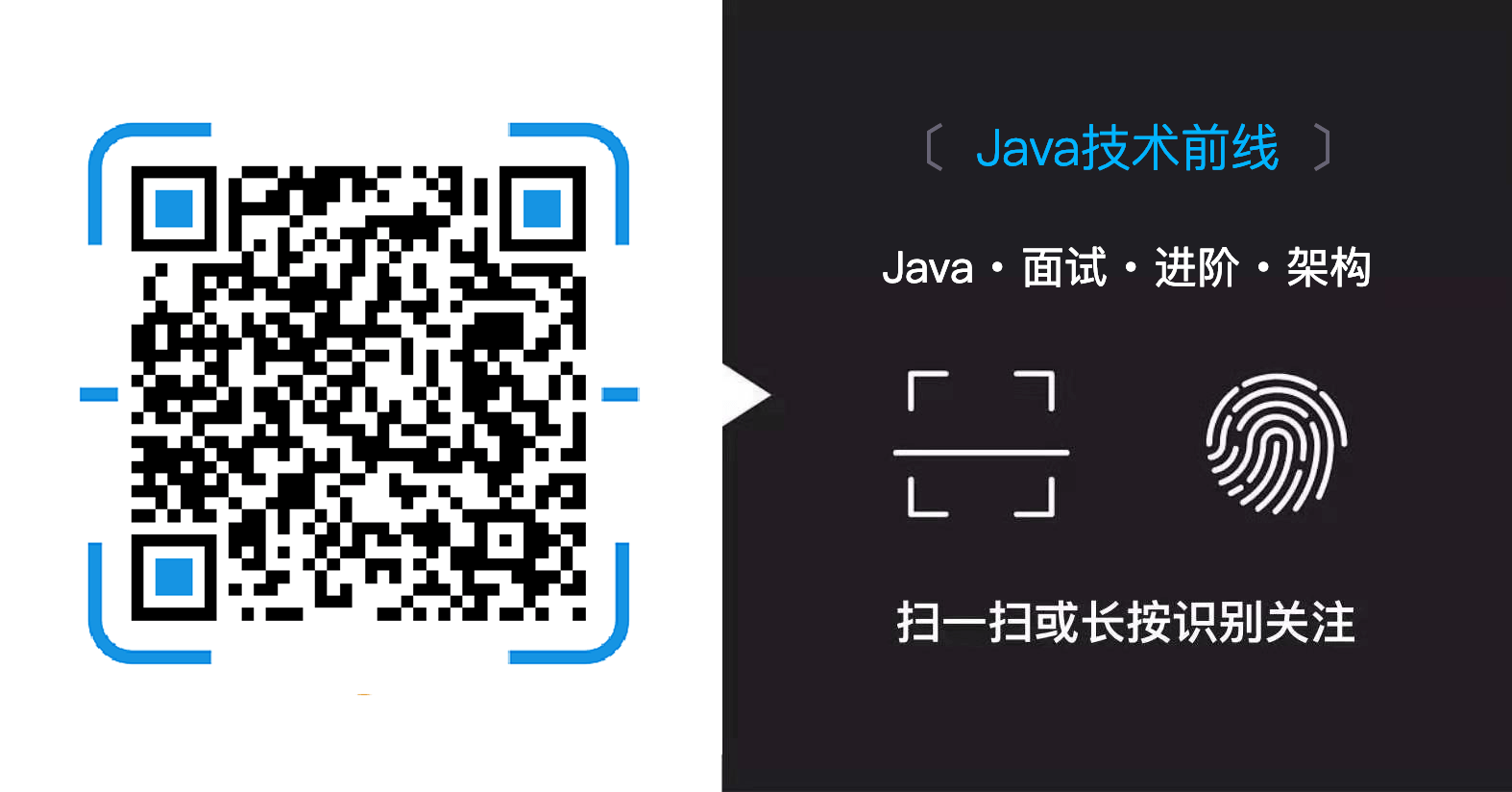15. sharding-jdbc源码之EventBus-轻量级进程内事件分发组件
阿飞Javaer,转载请注明原创出处,谢谢!
EventBus来自于google-guava包中。源码注释如下:
Dispatches events to listeners, and provides ways for listeners to register themselves.
The EventBus allows publish-subscribe-style communication between components
without requiring the components to explicitly register with one another (and thus be
aware of each other). It is designed exclusively to replace traditional Java in-process
event distribution using explicit registration. It is not a general-purpose publish-subscribe
system, nor is it intended for interprocess communication.
翻译:将事件分派给监听器,并为监听器提供注册自己的方法。EventBus允许组件之间的发布 – 订阅式通信,而不需要组件彼此明确注册(并且因此彼此意识到)。 它专门用于使用显式注册替换传统的Java进程内事件分发。 它不是一个通用的发布 – 订阅系统,也不是用于进程间通信。
使用参考
关于EventBus的用例代码提取自sharding-jdbc源码,并结合lombok最大限度的简化:
- EventBusInstance–用于获取EventBus实例(饿汉式单例模式)
@NoArgsConstructor(access = AccessLevel.PRIVATE)
public final class EventBusInstance {
private static final EventBus INSTANCE = new EventBus();
public static EventBus getInstance() {
return INSTANCE;
}
}
- DMLExecutionEvent–发布订阅事件模型
@Getter
@Setter
public class DMLExecutionEvent {
private String id;
private String dataSource;
private Date sendTime;
}
- DMLExecutionEventListener–事件监听器
public final class DMLExecutionEventListener {
@Subscribe
@AllowConcurrentEvents
public void listener(final DMLExecutionEvent event) {
System.out.println("监听的DML执行事件: " + JSON.toJSONString(event));
// do something
}
}
-- Main–主方法:注册订阅者监听事件,以及发布事件。
/**
* @author wangzhenfei9
* @version 1.0.0
* @since 2018年04月24日
*/
public class Main {
static{
System.out.println("register listener...");
EventBusInstance.getInstance().register(new DMLExecutionEventListener());
}
public static void main(String[] args) throws InterruptedException {
for (int i=0; i<10; i++) {
pub();
Thread.sleep(3000);
}
}
private static void pub(){
DMLExecutionEvent event = new DMLExecutionEvent();
event.setId(String.valueOf(new Random().nextInt(1000)));
event.setDataSource("sj_db_1");
event.setSendTime(new Date());
System.out.println("发布的DML执行事件: " + JSON.toJSONString(event));
EventBusInstance.getInstance().post(event);
}
}
核心方法
EventBus一些重要方法解释如下:
- post(Object):Posts an event to all registered subscribers. This method will return successfully after the event has been posted to all subscribers, and regardless of any exceptions thrown by subscribers.
- register(Object): Registers all subscriber methods on object to receive events.Subscriber methods are selected and classified using this EventBus’s SubscriberFindingStrategy; the default strategy is the AnnotatedSubscriberFinder.
- unregister(Object):Unregisters all subscriber methods on a registered object.
源码分析
主要分析发布事件以及订阅的核心源码;
发布源码分析
public void post(Object event) {
// 得到所有该类已经它的所有父类(因为有些注册监听器是监听其父类)
Set<Class<?>> dispatchTypes = flattenHierarchy(event.getClass());
boolean dispatched = false;
// 遍历类本身以及所有父类
for (Class<?> eventType : dispatchTypes) {
// 重入读锁先锁住
subscribersByTypeLock.readLock().lock();
try {
// 得到类的所有订阅者,例如DMLExecutionEvent的订阅者就是DMLExecutionEventListener(EventSubscriber有两个属性:重要的属性target和method,target就是监听器即DMLExecutionEventListener,method就是监听器方法即listener;从而知道DMLExecutionEvent这个事件由哪个类的哪个方法监听处理)
Set<EventSubscriber> wrappers = subscribersByType.get(eventType);
if (!wrappers.isEmpty()) {
// 如果有时间订阅者,那么dispatched = true,表示该事件可以分发
dispatched = true;
// 遍历所有的时间订阅者,每个订阅者的队列都增加该事件
for (EventSubscriber wrapper : wrappers) {
enqueueEvent(event, wrapper);
}
}
} finally {
subscribersByTypeLock.readLock().unlock();
}
}
if (!dispatched && !(event instanceof DeadEvent)) {
post(new DeadEvent(this, event));
}
// 分发进入队列的事件
dispatchQueuedEvents();
}
/**
* queues of events for the current thread to dispatch;
* 核心数据结构为LinkedList,保存的是EventBus.EventWithSubscriber类型数据
*/
private final ThreadLocal<Queue<EventBus.EventWithSubscriber>> eventsToDispatch =
new ThreadLocal<Queue<EventBus.EventWithSubscriber>>() {
@Override protected Queue<EventBus.EventWithSubscriber> initialValue() {
return new LinkedList<EventBus.EventWithSubscriber>();
}
};
void enqueueEvent(Object event, EventSubscriber subscriber) {
// 数据结构为new LinkedList<EventWithSubscriber>(),EventWithSubscriber就是对event和subscriber的封装,LinkedList数据结构保证进入队列和消费队列顺序一致
eventsToDispatch.get().offer(new EventBus.EventWithSubscriber(event, subscriber));
}
/**
* Drain the queue of events to be dispatched. As the queue is being drained,
* new events may be posted to the end of the queue.
* 排干要被分发的事件队列,正在排干的过程中,可能有新的事件被追加到队列尾部
*/
void dispatchQueuedEvents() {
// don't dispatch if we're already dispatching, that would allow reentrancy
// and out-of-order events. Instead, leave the events to be dispatched
// after the in-progress dispatch is complete.
// 如果正在排干队列,则不分发
if (isDispatching.get()) {
return;
}
// ThreadLocal设置正在分发即isDispatching为true
isDispatching.set(true);
try {
Queue<EventBus.EventWithSubscriber> events = eventsToDispatch.get();
EventBus.EventWithSubscriber eventWithSubscriber;
while ((eventWithSubscriber = events.poll()) != null) {
// 调用订阅者处理事件(method.invoke(target, new Object[] { event });,method和target来自订阅者)
dispatch(eventWithSubscriber.event, eventWithSubscriber.subscriber);
}
} finally {
// ThreadLocal可能内存泄漏,用完需要remove
isDispatching.remove();
// 队列中的事件任务处理完,清空队列,即所谓的排干(Drain)
eventsToDispatch.remove();
}
}
订阅源码分析
/**
* Registers all subscriber methods on {@code object} to receive events.
* 注册object上所有订阅方法,用来接收事件,上面的使用参考,DMLExecutionEventListener就是这里的object
*/
public void register(Object object) {
// Multimap是guava自定义数据结构,类似Map<K, Collection<V>>,key就是事件类型,例如DMLExecutionEvent,value就是EventSubscriber即事件订阅者集合(说明,这个的订阅者集合是指object里符合订阅者的所有方法,例如DMLExecutionEventListener.listener(),DMLExecutionEventListener中可以有多个订阅者,注解@Subscribe即可),
Multimap<Class<?>, EventSubscriber> methodsInListener =
finder.findAllSubscribers(object);
// 重入写锁保证线程安全
subscribersByTypeLock.writeLock().lock();
try {
// 把订阅者信息放到map中缓存起来(发布事件post()时就会用到)
subscribersByType.putAll(methodsInListener);
} finally {
subscribersByTypeLock.writeLock().unlock();
}
}
作者:阿飞的博客
来源:https://www.jianshu.com/p/891fa8cb1540
看完两件小事
如果你觉得这篇文章对你挺有启发,我想请你帮我两个小忙:
- 把这篇文章分享给你的朋友 / 交流群,让更多的人看到,一起进步,一起成长!
- 关注公众号 「方志朋」,公众号后台回复「666」 免费领取我精心整理的进阶资源教程

本文著作权归作者所有,如若转载,请注明出处
转载请注明:文章转载自「 Java极客技术学习 」https://www.javajike.com

 微信扫一扫
微信扫一扫